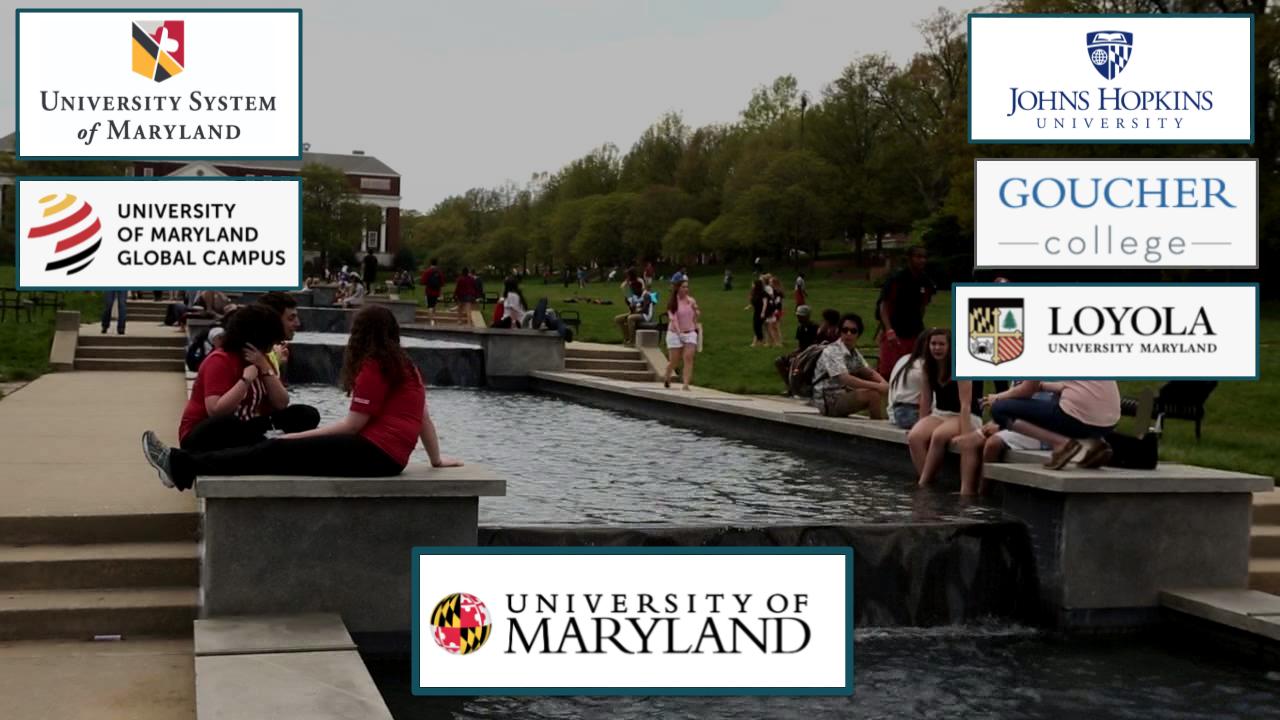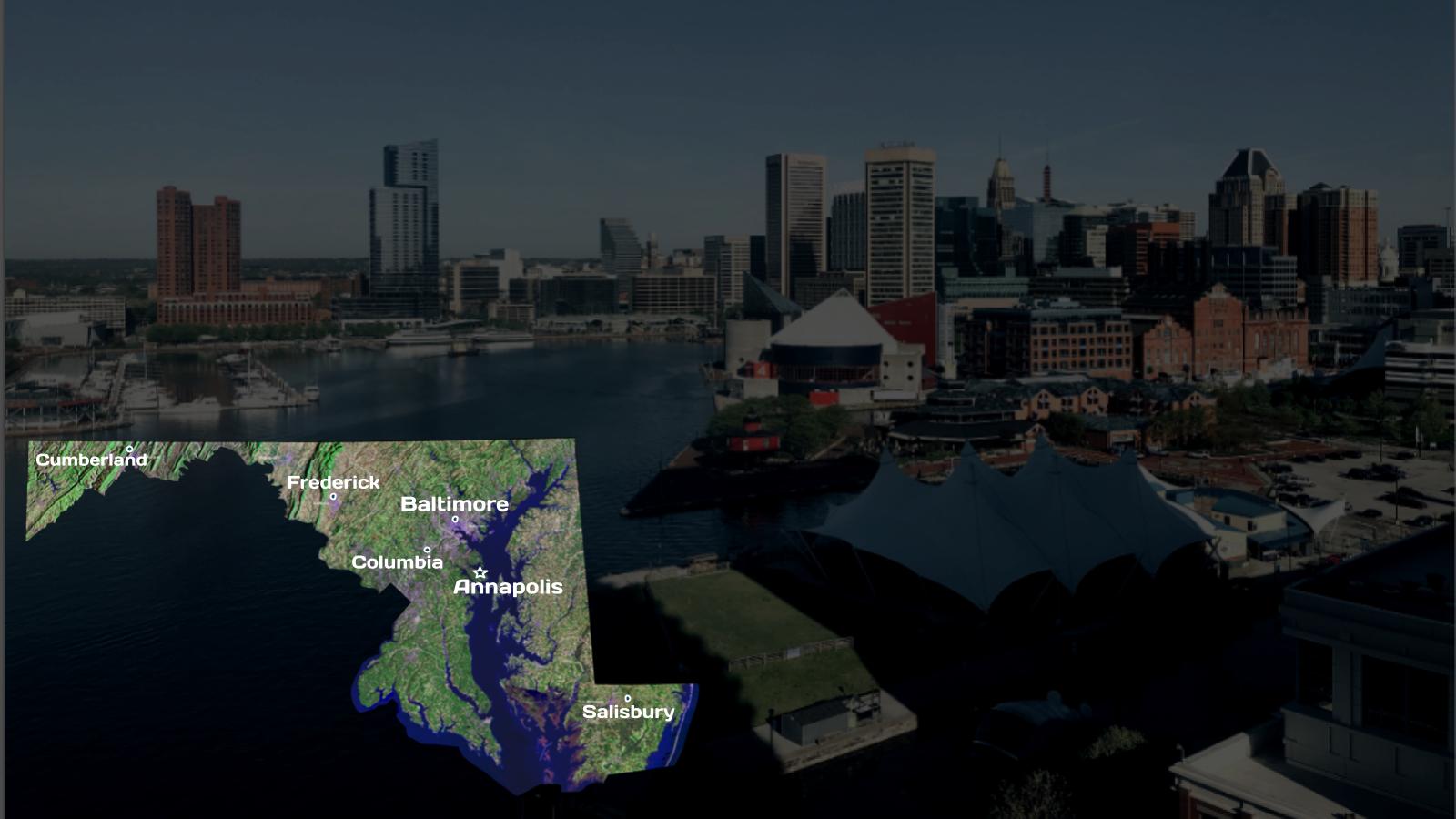Summary
Maryland is located in the Southern region of the USA with Annapolis as its capital. Wes Moore (D) is Governor.
The Maryland General Assembly is the state legislature of the U.S. state of Maryland that convenes within the State House in Annapolis. It is a bicameral body: the upper chamber, the Maryland Senate, has 47 representatives, and the lower chamber, the Maryland House of Delegates, has 141 representatives. Members of both houses serve four-year terms.
OnAir Post: Maryland onAir Hub
News
Two weeks ago, the Key Bridge collapsed. Six lives were lost, and our state was heartbroken. But we are determined to bring closure to the families, clear the channel, take care of everyone affect by this crisis, and rebuild the Key Bridge.
Gov. Wes Moore is holding a press conference Thursday to provide updates on efforts underway following the collapse of the Francis Scott Key Bridge in Baltimore. Moore will be joined by the Unified Command, U.S. Small Business Administrator Isabel Casillas Guzman, and federal and local elected leaders.
This week, I delivered my second State of the State Address. But it may have been a little long, so if you didn’t catch it, here’s what you missed.
Gov. Wes Moore (D) signed more than 120 bills into law Tuesday. It was the first bill signing following the end of the 2024 legislative session.
“This legislation will support the businesses and the workers that have been affected by this collapse,” Moore said during the lengthy bill-signing ceremony.
“Among the many provisions that our administration helped to craft, this bill will create a new permanent scholarship program for the families of transportation workers who died on the job,” he said. “This legislation will also allow for more flexibility in work search requirements for unemployment insurance. And the legislation will empower our administration to stay nimble and our response to the collapse even though session is now over. It does not mean that Maryland’s response will cease.”
Senate Bill 1188 and HB 1526, sponsored respectively by Senate President Bill Ferguson and Del. Luke Clippinger, both Baltimore City Democrats, were introduced in the waning days of the session and less than a week after the Francis Scott Key Bridge collapse.
Moore signed the bills Tuesday afternoon after rushing back from a meeting with Maryland’s federal legislative delegation on Capitol Hill to discuss aid for ongoing recovery and reconstruction efforts.
The emergency bills become effective upon the signature of the governor.
Moore also signed into law a second port-related act. House Bill 375 and its identical companion, SB 156, formally renamed the port in honor of Helen Delich Bentley.
Bentley covered maritime issues as a journalist and later served as chair of the federal Maritime Commission for six years. She went on to serve for a decade in Congress representing Maryland’s 2nd District.
Forbes Breaking News – March 12, 2024 (04:11)
During a Senate Budget Committee hearing last week, Sen. Chris Van Hollen (D-MD) questioned witnesses about growing healthcare costs and improving the healthcare system. Fuel your success with Forbes. Gain unlimited access to premium journalism, including breaking news, groundbreaking in-depth reported stories, daily digests and more. Plus, members get a front-row seat at members-only events with leading thinkers and doers, access to premium video that can help you get ahead, an ad-light experience, early access to select products including NFT drops and more:
Democratic Sen. Chris Van Hollen of Maryland tells “Face the Nation” that “I’m not clear” on the White House’s policy toward Israel amid the war with Hamas. “The President and the White House have yet to lay out what consequences they have and they want to impose,” Van Hollen said.
About
This Maryland onAir Hub is managed by students supporting Marylanders to become more informed about and engaged in local, state, and federal politics while facilitating more civil and positive discussions with their representatives, candidates, and fellow citizens.
- Maryland onAir is one of 50 state governance and elections hubs that the US onAir Network is providing to help reinvigorate US democracy. This post has short summaries of current state and federal representatives with links to their complete Hub posts. Students curate post content from government, campaign, social media, and public websites. Key content on the Maryland Hub is also replicated on the US onAir nations Hub at: us.onair.cc.
- Maryland students will be forming onAir chapters in their colleges and universities to help curate Maryland onAir content. As more students participate and more onAir chapters are started, we will expand to include more state and local content as well as increase the number of aircasts – student-led, livestreamed, online discussions with candidates, representatives, and the public.
Find out more about Who Represents Me in Maryland
Learn more about the US onAir Network
All hub content in onAir hubs is free to the public. Hub ontent is under the Creative Commons Attribution-NonCommercial license which permits content sharing and adaptation by nonprofit organizations as long as proper attribution is given to its author(s) and is used for non-commercial purposes. Content and moderation guidelines reinforce our commitment to fact-based, comprehensive content and civil and honest discourse.
To participate in aircast and post discussions, email usdemocracy@onair.cc and include your first name last name, and zipcode. Your real name and any other profile information will not be displayed unless you choose to do so. Your personal information is not shared with any other website or organization.
Hub membership will enable you to:
- Participate in issue and interview aircasts (student-led livestreamed discussions);
- Interact directly with post authors and curators giving them feedback, content suggestions, and asking questions;
- Ask questions, make suggestions, and give endorsement to representatives
Web Links
State Representatives
Governor Wes Moore
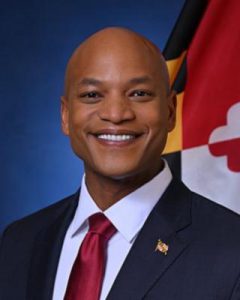 Current Position: Author, small business owner
Current Position: Author, small business owner
Affiliation: Democrat
Former Position: CEO, Robin Hood Foundation from 2015 – 2021
Wes Moore is the 63rd Governor of the state of Maryland. He is Maryland’s first Black Governor in the state’s 246-year history, and is just the third African American elected Governor in the history of the United States.
Wes Moore, a combat veteran, bestselling author, small business owner, Rhodes Scholar and former CEO of one of the nation’s largest anti-poverty organizations, has devoted his life’s work to a basic principle: no matter your start in life, you deserve an equal opportunity to succeed – a job you can raise a family on, a future you can look forward to.
OnAir Post: Wes Moore – MD
US Representatives
Senator Ben Cardin
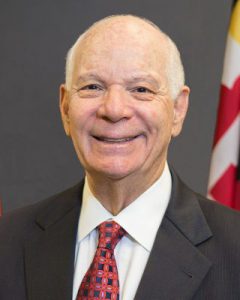 Current Position: US Senator
Current Position: US Senator
Affiliation: Democrat
Former Positions: US Representative from 1987 – 2007; State Delegate from 1967 – 1987; Attorney from 1967 – 1978
2024: Not Running for another term
Featured Quote:
Raising the debt ceiling will allow us to pay for what we’ve already spent, our bills – trillions under the previous administration. It’s like paying off our credit card. Default would be catastrophic for our economy. #fullfaithandcredit
OnAir Post: Ben Cardin – MD
Senator Chris Van Hollen
 Current Position: US Senator
Current Position: US Senator
Affiliation: Democrat
Former Positions: US Representative District 8 from 2003 – 2017; State Senator from 1995 – 2003; Lawyer from 1990 – 2003
Other Positions: Chair, Subcommittee on Financial Services and General Government
In 2007, Van Hollen became the chair of the Democratic Congressional Campaign Committee (DCCC). His father was a Foreign Service officer. Van Hollen worked as a legislative assistant for defense and foreign policy to U.S. Senator Charles Mathias and a legislative advisor for federal affairs to Maryland Governor William Donald Schaefer. He joined the law firm of Arent Fox.
Featured Quote:
Our Budget Framework invests in workers, families, & our economy. For starters, that means: -Continuing monthly Child Tax Credit payments -Expanding Medicare for hearing, vision & dental -Reducing the $ of Rx Drugs We’ll lower costs for working people across the board.
OnAir Post: Chris Van Hollen – MD
Andy Harris MD-01
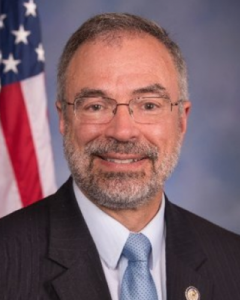 Current Position: US Representative of MD District 1 since 2011
Current Position: US Representative of MD District 1 since 2011
Affiliation: Republican
Former Position: State Senator from 1999 – 2011
District: Eastern Shore of Maryland, including Salisbury, as well as Harford County and parts of Baltimore County
Upcoming Election:
Harris served in the Navy Medical Corps and the U.S. Naval Reserve as a lieutenant commander on active duty during Operation Desert Storm. He previously worked as an anesthesiologist, an associate professor of anesthesiology and critical care medicine, and as chief of obstetric anesthesiology at the Johns Hopkins Hospital.
Featured Quote:
I’m proud to have joined @RepTenneyon an amicus brief to SCOTUS to overturn the NY restrictive concealed carry law. A successful ruling in this case could very well overturn the impossibly restrictive “good cause” requirements to obtain a CC license in many states including MD.
OnAir Post: Andy Harris MD-01
Johnny Olszewski MD-02
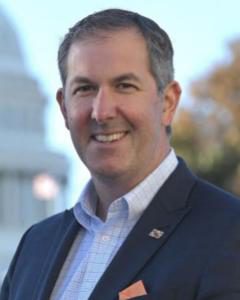 John Anthony Olszewski Jr. born September 10, 1982), also known by his nickname Johnny O, is an American politician who is the member of the U.S. House of Representatives from Maryland’s 2nd congressional district. He is also the 14th and current county executive of Baltimore County, Maryland.
John Anthony Olszewski Jr. born September 10, 1982), also known by his nickname Johnny O, is an American politician who is the member of the U.S. House of Representatives from Maryland’s 2nd congressional district. He is also the 14th and current county executive of Baltimore County, Maryland.
Olszewski first ran for the U.S. House of Representatives in 2024, defeating state delegate Harry Bhandari in a landslide in the Democratic primary and defeating radio host Kimberly Klacik in the general election. He will be sworn in on January 3, 2025.
Sarah Elfreth MD-03
 Sarah Kelly Elfreth (born September 9, 1988) is an American politician who has served as a member of the Maryland Senate representing the 30th district since 2019.
Sarah Kelly Elfreth (born September 9, 1988) is an American politician who has served as a member of the Maryland Senate representing the 30th district since 2019.
Elfreth won the 22-way Democratic primary in the U.S. House of Representatives election in Maryland’s 3rd congressional district and then defeated the Republican nominee in the general election. She will be sworn in on January 3, 2025.
OnAir Post: Sarah Elfreth MD-03
Glenn Ivey MD-04
 Current Position: US Representative of MD District 4 since 2023
Current Position: US Representative of MD District 4 since 2023
Affiliation: Democrat
Former Position: State’s attorney for Prince George’s County, Maryland, from 2002 to 2011.
District: Most of Prince George’s County and a small portion of Montgomery County.
Upcoming Election:
Ivey served on Capitol Hill as chief counsel to Senate majority leader Tom Daschle, as counsel to U.S. senator Paul Sarbanes during the Whitewater controversy, as chief majority counsel to the Senate Banking Committee, and on the staff of U.S. representative John Conyers. He also worked for U.S. attorney Eric Holder as an assistant U.S. attorney and as chair of the Maryland Public Service Commission.
OnAir Post: Glenn Ivey MD-04
Steny Hoyer MD-05
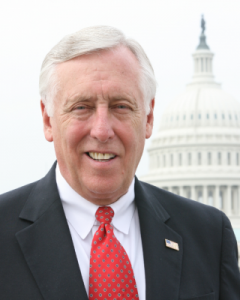 Current Position: US Representative of MD District 5 since 1981
Current Position: US Representative of MD District 5 since 1981
Affiliation: Democrat
Former Position: State Senator from 1967 – 1978; House Majority Leader
District: All of Charles, St. Mary’s, and Calvert counties, as well as portions of Prince George’s and Anne Arundel counties.
Upcoming Election:
Steny Hoyer was House Majority Leader from 2007 to 2011 and again from 2019 to 2023. From 1962 to 1966, Hoyer was a member of the staff of U.S. Senator Daniel Brewster; also on Brewster’s staff at that time was Nancy Pelosi. He earned his J.D. degree from Georgetown University Law Center in 1966.
Featured Quote:
In the first 200 days of the 117th Congress, House Democrats have delivered results for Americans. Take a look at the significant legislative accomplishments that House Democrats have advanced during this Congress #ForThePeople:
OnAir Post: Steny Hoyer MD-05
April McClain-Delaney MD-06
 April Lynn McClain-Delaney[1] (née McClain; born May 28, 1964) is an American lawyer, government official, and politician who served as an official of the U.S. Department of Commerce during the Biden administration.
April Lynn McClain-Delaney[1] (née McClain; born May 28, 1964) is an American lawyer, government official, and politician who served as an official of the U.S. Department of Commerce during the Biden administration.
A member of the Democratic Party, in 2024 she won the U.S. House of Representatives election in Maryland’s 6th congressional district after prevailing from a crowded primary and defeating Republican former state delegate Neil Parrott in the general election.
She is the wife of former Congressman John Delaney, who represented the 6th district from 2013 to 2019.
Source: Wikipedia
OnAir Post: April McClain-Delaney MD-06
Kweisi Mfume MD-07
 Current Position: US Representative of MD District 7 since 2021
Current Position: US Representative of MD District 7 since 2021
Affiliation: Democrat
Other Positions: House Committee on Small Business
Subcommittee on Contracting and Infrastructure.
District: Almost the entire city of Baltimore and some of Baltimore County
Upcoming Election:
Kweisi Mfume first served as 7th district representative from 1987 to 1996. Mfume first left his seat to become the president and CEO of the National Association for the Advancement of Colored People (NAACP), a position he held from 1996 to 2004. Mfume returned to his former House seat in 2020 after it was left vacant by the death of Elijah Cummings
Featured Quote:
Spread the word- we passed a new child tax credit and you may be eligible for cash payments beginning July 15, 2021. Visit http://childtaxcredit.gov for details. #ChildTaxCredit
OnAir Post: Kweisi Mfume MD-07
Jamie Raskin MD-08
 Current Position: US Representative of MD District 8 since 2017
Current Position: US Representative of MD District 8 since 2017
Affiliation: Democrat
Other Positions: Committee on House Administration; Subcommittee on Civil Rights and Civil Liberties
Former Position: Constitutional law professor from 1990 – 2006
District: DC suburbs, including Bethesda, Chevy Chase, and Potomac and Rockville and Silver Spring.
Upcoming Election:
Raskin co-chairs the Congressional Freethought Caucus. He was the lead impeachment manager (prosecutor) for the second impeachment of President Donald Trump in response to the attack on the U.S. Capitol.[3][4] Before his election to Congress, Raskin was a constitutional law professor at American University Washington College of Law and co-founder of the Marshall-Brennan Constitutional Literacy Project.
Featured Quote:
When violent insurrectionists assault police officers, smash windows and storm the Capitol, most of us see terrorists. Rep. Clyde sees “tourorists,” a whole new form of riot denial.
OnAir Post: Jamie Raskin MD-08
More Information
Wikipedia
Contents
The government of Maryland is conducted according to the Maryland Constitution. The United States is a federation; consequently, the government of Maryland, like the other 49 state governments, has exclusive authority over matters that lie entirely within the state’s borders, except as limited by the Constitution of the United States.
Administrative influence in Maryland is divided among three branches of government: executive, legislative, and judicial. Unlike most other states,[1] significant autonomy is granted to many of Maryland’s counties.[2]
Most of the business of government is done in Annapolis, the state capital. However, some cabinet level and state officials have their offices in Baltimore. Almost all state and county elections are held in even-numbered years not divisible by four, in which the President of the United States is not elected—this, as in other states, is intended to divide state and federal politics.
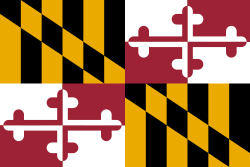
Executive branch
The constitution establishes five principal executive branch officers, as described below. Four of them are elected statewide: the governor and lieutenant governor (who are elected on the same ticket), the attorney general, and the comptroller. The fifth, the treasurer, is elected by a joint ballot of both houses of the General Assembly.
Governor
As in all states, a popularly elected governor heads Maryland’s executive branch. The governor’s cabinet is known as the Executive Council. Like most state chief executives, the Maryland governor is elected to serve a four-year term. The governor is term limited to serve no more than two consecutive terms. The governor is elected under the plurality system. The current governor is Wes Moore.
The governor has power to veto laws passed by the state’s legislature and, like most of the nation’s governors, also has a line item veto, which can be used to strike certain portions of appropriations bills. The state legislature can override a veto by a three-fifths (60%) vote of the total number of members in each house. This is different from most states, which usually require a higher two-thirds (66.66%) vote to override a veto.
The appointment powers of the governor are extensive. The governor appoints almost all military and civil officers of the State subject to the advice and consent of the Senate. In addition to appointing the heads of major departments, boards, and commissions of the State government, the governor appoints certain boards and commissions in each county and the City of Baltimore, as provided for by law. The governor also commissions notaries public and appoints persons to fill vacancies in the offices of Attorney General and Comptroller (both of which are normally elected by the people) and also to fill vacant seats in the General Assembly. The governor can remove any appointed officer (except interim members of the General Assembly) for cause.
The governor is commander-in-chief of the military forces of the State, the Maryland National Guard, except when such forces are called into the national service by the President of the United States, as well as the Maryland Defense Force. In times of public emergency the Governor has certain emergency powers as defined by law.
Lieutenant governor
The Maryland Lieutenant Governor is elected on the same ticket as the state’s Governor and is nominally the second highest-ranking official in the state. The position was first created by the short-lived Maryland Constitution of 1864 and functioned from 1865 to 1868 before being abolished by the state’s present constitution, which was ratified in 1867. The position was re-established by Constitutional amendment in 1970, under which the Lieutenant Governor “shall have only the duties delegated to him by the Governor.”
The Maryland Lieutenant Governor, currently Aruna Miller, is therefore weaker than the office in most other states which have one (several states do not have one). For instance, in many states, including Texas, the Lieutenant Governor is the President of the State’s Senate and in California the Lieutenant Governor assumes all of the governor’s powers when the governor is out of the state. In both of those states, as in some others, the Lieutenant Governor is elected in his or her own right, independently of the state’s Governor.
In practice, Maryland’s Lieutenant Governor attends cabinet meetings, chairs various task forces and commissions, represents the state at ceremonial functions and at events which the Governor cannot attend, and advises the Governor. If there is a vacancy in the office of the Governor, the Lieutenant Governor becomes the Governor. A vacancy in the Lieutenant Governorship is filled by a person nominated by the Governor and confirmed by a majority vote of the General Assembly voting in joint session.
Attorney General
The Attorney General is the chief legal officer of the State and is elected by the people every four years with no term limits. To run for the office a person must be a citizen of and qualified voter in Maryland and must have resided and practiced law in the state for at least ten years. The current attorney general is Anthony G. Brown.
The Attorney General has general charge, supervision and direction of the legal business of the State. The attorney general is the legal advisor and representative of the Governor, the General Assembly, the Judiciary, and the major departments, various boards, commissions, officials and institutions of State Government. The office represents the State in all cases pending in the Appellate Courts of the State, and in the United States Supreme Court and lower Federal Courts. This arrangement can lead to significant conflict when the Attorney General and Governor have strongly differing views.
Comptroller
The Comptroller is the state’s chief financial officer and is also elected by the people for a four-year term. The comptroller is not term-limited. The office was established by the Maryland Constitution of 1851 due to concern about the potential for fraud and corruption in the administration of the public treasury. The constitutional duties of the office begin with the broad mandate to exercise “general superintendence of the fiscal affairs of the State”, which includes collecting taxes and maintaining the general ledger. The Comptroller (or a deputy) countersigns all checks drawn by the State Treasurer upon the deposits of the State. The Comptroller also prescribes the formalities for transfer of other evidence of State debt and countersigns such papers. The current comptroller is Brooke Lierman.
In addition, the comptroller’s office audits taxpayers for compliance, handles delinquent tax collection, and enforces license and unclaimed property laws. The agency publicizes forgotten bank accounts, insurance benefits and other unclaimed assets of taxpayers. Acting as Maryland’s chief accountant, the comptroller pays the state’s bills, maintains its books, prepares financial reports, and pays state employees.
Treasurer
The Treasurer, currently Dereck E. Davis, is the principal custodian of the State’s cash deposits, money from bond sales, and other securities and collateral and directs the investments of those assets. The Treasurer is elected by a joint ballot of both houses of the General Assembly, a tradition begun starting with the Maryland Constitution of 1851, which also created the Board of Public Works (see below).
Because of the close relationship with the General Assembly, the Treasurer briefs the members of the Legislature on matters concerning the State Treasury. The Treasurer is also responsible for producing an annual report to provide the Governor, the General Assembly, and the public with current information about the operations of the State Treasurer’s Office.
Board of Public Works
The State Board of Public Works was first created by the Maryland Constitution of 1864 and is composed of the Governor, who chairs it, the Comptroller, and the Treasurer. The three-member board is quite powerful and there is no other state that has a similar institution. The board, which generally meets twice a month, reviews and approves capital projects, procurement contracts, and the acquisition, use, and transfer of State assets, to assure that executive decisions are made responsibly and responsively.
Other
- The Maryland Department of Agriculture (MDA) oversees food safety, consumer protection, farmering, food and fiber processing, and other businesses engaged in agricultural related operations.
- The Maryland State Department of Education (MSDE) oversees public school districts.
- The Maryland Department of the Environment (MDE) is the environmental protection agency.
- The Maryland Department of General Services (DGS) manages, operates, and maintains state property and acts as a primary procurement agency.
- The Maryland Department of Health oversees and regulates health-related issues.
- The Maryland Department of Housing and Community Development (DHCD) oversees housing policy.
- The Maryland Department of Labor oversees unemployment insurance, occupational and professional licensing, labor regulation, workforce training, financial regulation, and the Maryland Racing Commission.
- The Maryland Department of Natural Resources (DNR) maintains natural resources such as state parks, public lands, state forests, state waterways, wildlife and recreation areas.
- The Maryland Department of Transportation (MDOT) oversees the Maryland Transportation Authority, Maryland Transit Administration, Maryland Port Administration, State Highway Administration, Maryland Motor Vehicle Administration, and Maryland Aviation Administration.
- The Maryland State Archives serves as the central depository for government records of permanent value.
Legislative branch

The state’s legislative branch is styled as the General Assembly and consists of a 47-member Senate and a 141-member House of Delegates. It meets each year for 90 days to act on more than 2300 bills including the State’s annual budget. Like the governor, members of both houses serve four-year terms. Each house elects its own officers, judges the qualifications and election of its own members, establishes rules for the conduct of its business, and may punish or expel its own members.
The current pattern for distribution of seats began with the legislative apportionment plan of 1972 and has been revised every ten years thereafter according to the results of the decennial U.S. Census. A Constitutional amendment, the plan created 47 legislative districts, many of which cross county boundaries to delineate districts relatively equal in population. Each legislative district elects one senator and three delegates. Some of the larger districts are divided into delegate subdistricts to provide local representation to areas not large enough to constitute an entire legislative district.
The Senate is led by a President and the House by a Speaker whose respective duties and prerogatives enable them to influence the legislative process significantly. The President and the Speaker appoint the members of most committees and name their chairs and vice-chairs, except in the case of the Joint Committee on Investigation whose members elect their own officers. The President and Speaker preside over the daily sessions of their respective chambers, maintaining decorum and deciding points of order. As legislation is introduced, they assign it to a standing committee for consideration and a public hearing.
Judicial branch
Supreme Court
The Supreme Court of Maryland is the highest court in the state. In addition to being the court of last resort for the state, the Supreme Court also administers and sets rules and guidelines for the state’s court system. It has original jurisdiction in only a few areas and hears most cases on appeal. Prior to 2022, the Supreme Court was named the Court of Appeals, but a 2022 constitutional amendment changed the title to its current name.[3] The court has seven judges, one from each of the state’s seven appellate judicial circuits, which are presently as follows:
- 1st Appellate Judicial Circuit: Caroline, Cecil, Dorchester, Kent, Queen Anne’s, Somerset, Talbot, Wicomico & Worcester counties
- 2nd Appellate Judicial Circuit: Baltimore County & Harford County
- 3rd Appellate Judicial Circuit: Allegany, Carroll, Frederick, Garrett, Howard & Washington counties
- 4th Appellate Judicial Circuit: Prince George’s County
- 5th Appellate Judicial Circuit: Anne Arundel, Calvert, Charles & St. Mary’s counties
- 6th Appellate Judicial Circuit: Baltimore
- 7th Appellate Judicial Circuit: Montgomery County
Appellate Court
To ease the caseload of the Supreme Court, the state’s second-highest court, the Appellate Court was created in 1966, following a constitutional amendment. Except as otherwise provided by law, the Appellate Court has exclusive initial appellate jurisdiction over any reviewable judgment, decree, order, or other action of a circuit court or an orphans’ court, except for appeals in criminal cases in which the death penalty is imposed. Generally, it hears cases appealed from the circuit courts. Prior to 2022, the Appellate Court was named the Court of Special Appeals, but a 2022 constitutional amendment changed the title to its current name.[3]
Judges of the Appellate Court are empowered to sit in panels of three. A hearing or rehearing of a case en banc, in which all of the Court’s judges sit, may be ordered in any case by a majority of the Court’s incumbent judges. The court has thirteen judges, one from each of the state’s seven judicial appellate circuits and six at-large judges.
Judges on both the Supreme Court and the Appellate Court are appointed by the Governor, with the consent of the Senate and the approval of the people, for 10 years. This system is similar to the Missouri Plan, which is used in 11 states to fill judicial appointments, in that voters get to decide whether or not to continue a judge in office. However, it is different in that the Governor’s choice in whom to appoint is not limited by a Judicial Selection Commission and the State Senate must confirm the nominee before the judge takes office.
Circuit Courts

Circuit Courts are the highest common law and equity courts of record exercising original jurisdiction within Maryland. Each has full common law and equity powers and jurisdiction in all civil and criminal cases within its county or counties, and all the additional powers and jurisdiction conferred by the Maryland Constitution and by law, except where jurisdiction has been limited or conferred exclusively upon another tribunal by law. The Circuit Courts are trial courts of general jurisdiction. Their jurisdiction is very broad but generally covers major civil cases and more serious criminal matters. Circuit Courts also may decide appeals from the District Court and certain administrative agencies. Cases can be heard by a jury when the amount in controversy is over $15,000. Juries are limited to the Circuit Courts.
The state is divided into eight judicial circuits, which are presently as follows:
- 1st Judicial Circuit (7 judges): Dorchester (1 judge), Somerset (1 judge), Wicomico (3 judges) & Worcester (2 judges) counties
- 2nd Judicial Circuit (7 judges): Caroline (1 judge), Cecil (3 judges), Kent (1 judge), Queen Anne’s(1 judge) & Talbot (1 judge) counties
- 3rd Judicial Circuit (21 judges): Baltimore County (16 judges) & Harford County (5 judges)
- 4th Judicial Circuit (7 judges): Allegany (2 judges), Garrett (1 judge) & Washington (4 judges) counties
- 5th Judicial Circuit (18 judges): Anne Arundel (10 judges), Carroll (3 judges) & Howard (5 judges) counties
- 6th Judicial Circuit (24 judges): Frederick (4 judges) & Montgomery (20 judges) counties
- 7th Judicial Circuit (32 judges): Calvert (2 judges), Charles (4 judges), Prince George’s (23 judges) & St Mary’s (3 judges) counties
- 8th Judicial Circuit (30 judges): Baltimore
Unlike other state courts, the Circuit Court has no chief judge. Instead, eight circuit administrative judges perform administrative duties in each of their respective circuits. Each Circuit Court judge is appointed by the Governor (without Senate confirmation) for the temporary position until the next election . The judge’s name is placed on the ballot in the first general election once they qualify and pay the standard filing fee for the vacancy the judge was appointed to fill. The judge may be opposed formally by one or more qualified members of the bar, with the successful candidate that the people have elected to a fifteen-year term.
District Court
The Maryland District Court has jurisdiction in minor civil and criminal matters, and in virtually all violations of the Motor Vehicle Law. Created by a constitutional amendment in 1970, the court began operating in July 1971. It replaced the justices of the peace, the county trial magistrates, the People’s Courts (in certain counties), and various minor courts. With statewide jurisdiction, the Court functions in every county and Baltimore.
The exclusive jurisdiction of the District Court generally includes all landlord and tenant cases; replevin actions; motor vehicle violations; and criminal cases if the penalty is less than three years imprisonment or does not exceed a fine of $2,500, or both. The District Court has concurrent jurisdiction in misdemeanors and certain enumerated felonies, but has little equity jurisdiction. Small claims (civil cases involving amounts not exceeding $5,000) also come under the jurisdiction of the District Court. In civil cases involving amounts over $5,000 (but not exceeding $25,000), the District Court has concurrent jurisdiction with the circuit courts. Since the District Court provides no juries, a person entitled to and electing a jury trial must proceed to the Circuit Court. However, appeals from the District Court can be heard de novo in the Circuit Court.
District Court judges are appointed by the Governor to ten-year terms, subject to Senate confirmation. Unlike other judges in the state, they do not stand for election. As of October 2003, some 105 judges, including the Chief Judge, who is designated by the Chief Judge of the Supreme Court, serve on the Court. As the District Court’s administrative head, its Chief Judge appoints administrative judges for each of the twelve districts, subject to the approval of the Chief Judge of the Supreme Court. Administered centrally, the District Court of Maryland is funded totally by the State.
The District Court of Maryland is divided into twelve geographical districts as follows:
- District 1 (26 judges): Baltimore
- District 2 (5 judges): Dorchester (1 judge), Somerset (1 judge), Wicomico (2 judges) & Worcester (1 judge) counties
- District 3 (6 judges): Caroline (1 judge), Cecil (2 judges), Kent (1 judge), Queen Anne’s (1 judge) & Talbot (1 judge) counties
- District 4 (4 judges): Calvert (1 judge), Charles (2 judges) & St. Mary’s (1 judge) counties
- District 5 (13 judges): Prince George’s County
- District 6 (11 judges): Montgomery County
- District 7 (8 judges): Anne Arundel County
- District 8 (13 judges): Baltimore County
- District 9 (4 judges): Harford County
- District 10 (7 judges): Carroll (2 judges) & Howard (5 judges) counties
- District 11 (5 judges): Frederick (3 judges) & Washington (2 judges) counties
- District 12 (3 judges): Allegany (2 judges) & Garrett (1 judge) counties
Local government

At the local level, Maryland is notable among U.S. states for having a relatively small number of local governments. There are three forms of county government available to the state’s counties.[4] Note that the independent city of Baltimore is typically considered to be on par with the counties; it is reckoned as a county-equivalent for census purposes. Including Baltimore, there are 157 incorporated cities in Maryland. Maryland has no township or independent school district governments.[5]
Commissioner counties
In 1827, the General Assembly authorized elected boards of county commissioners for each county. Under the state constitution, the General Assembly retains full authority to legislate for a commissioner county. County commissioners have no authority to act in local matters without the express prior consent of the General Assembly.[6] In the areas where they do have authority to legislate, that authority is narrowly construed; it is limited to areas authorized by the General Assembly, enabling legislation, or public local laws.[4][7] The Constitution adopted in 1867 kept the power to pass public local laws vested in the General Assembly, which gave a lot of control over county government to county delegations in the General Assembly. As a result of this, the General Assembly spends considerable time dealing with local issues, ordinances, and expenditures.
Currently,[as of?] six counties are run by commissioners. They are:
Calvert, Carroll, Garrett, St. Mary’s, Somerset, and Washington Counties.
In 2010, the voters of Cecil County adopted a resolution to become a charter county[8] and subsequently elected Tari Moore as the first county executive.
Charter counties
Due partly to the large amount of time spent by the state legislature on local matters, the Maryland Constitution was amended in 1915 to allow counties the option of operating under a charter form of government, with substantial home rule power. To adopt this form of government, the voters of the county must approve the charter which their charter board drafts.[6]
Charter counties are governed by an elected county council with power to legislate on almost all local matters. Their authority is fairly broadly construed, though the regulation of elections and the manufacture and sale of alcoholic beverages is reserved to the General Assembly. The General Assembly also retains considerable authority over taxation, except in Baltimore and Montgomery counties.[7] Some counties which operate under charters have a separately-elected county executive while others vest executive functions along with legislative functions in the county council.
Currently,[as of?] eleven counties, including the most populous ones, operate under the charter form of government. They are: Anne Arundel (1964),[9] Baltimore (1956), Cecil (2012), Dorchester (2002), Frederick (2014),[10] Harford (1972), Howard (1968), Montgomery (1948), Prince George’s (1970), Talbot (1973), and Wicomico (1964) Counties.[11] Baltimore also operates under a charter.
Code Home Rule counties
Due to the reluctance of many counties to adopt a charter form of government, despite wanting a measure of home rule, the Maryland Constitution was again amended in 1966 to create a third class of county government, the “code home rule” status. If two thirds of a county’s commissioners adopt a resolution that the county become a code county and a majority of the voters approve of the resolution, the county becomes a code county. In a code county, the county commissioners have home-rule powers, and may enact legislation in the areas of the “express powers” of the charter counties. In addition, the commissioners retain all the powers of commissioners in commissioner counties. However, code counties have stricter limits on indebtedness than charter counties. The General Assembly can only legislate for the code counties as a class.[7]
“Express Powers” include franchises, appointment and compensation of county officers, merit system, pensions, group health benefits and joint pooling agreements, tax collections, campground and RVs, publishing and audits, claim proof, competitive bidding and bonds, records, health measures, road maintenance and engineering, prisoner compensation, county police, hearings, plumbing and zoning permits, residential land development, building code, licensing, parks and recreation, refuse collection and disposal. (with various exceptions)
— Article 25, Annotated Code of Maryland, Section 3[12]
Currently,[as of?] six counties operate as code counties: Allegany, Caroline, Charles, Kent, Queen Anne’s, and Worcester Counties.
Maryland and the national government

Maryland was the seventh state to ratify the United States Constitution, on April 28, 1788. Maryland elects two United States Senators and eight members of the United States House of Representatives. The state is served by the U.S. District Court for the District of Maryland (with two divisions, sitting in Baltimore and Greenbelt) and federal appeals from the state go to the United States Court of Appeals for the Fourth Circuit in Richmond, Virginia.
See also
- History of Maryland
- Maryland Constitution of 1776
- State government in the United States
- Political party strength in Maryland
- Impeachment in Maryland
References
Citations
- ^ Eilenberg, Robin Clark (May 31, 2019). “The County Program: Local Duties, Local Powers”. Maryland Association of Counties. Retrieved April 8, 2021.
As compared with other states in the US, Maryland’s county governments have a relatively large role in the delivery of public services.
- ^ Smith, J. Scott (Winter 1979). “Comment: State and Local Legislative Powers: An Analysis of the Conflict and Preemption Doctrinesin Maryland”. University of Baltimore Law Review. 8 (2). article 6. Retrieved April 8, 2021.
- ^ a b Voter-approved constitutional change renames high courts to Supreme and Appellate Court of Maryland
- ^ a b “Maryland at a Glance”. Maryland State Archives. Retrieved April 29, 2012.
- ^ Individual State Descriptions: 2022, 2022 Census of Governments, United States Census Bureau, p. 141
- ^ a b Bob White (2010). “To Charter or not to Charter…” Emmittsburg News-Journal.
- ^ a b c “Code Home Rule vs. Commissioner vs. Charter”. Maryland Association of Counties. 2019.
- ^ “Charter of Cecil County, Maryland” (PDF). Cecil County, Maryland. Archived from the original (PDF) on October 20, 2013. Retrieved October 20, 2013.
- ^ “Anne Arundel County, Maryland – Historic Chronology”. Maryland State Archives. October 27, 2022. Retrieved August 22, 2023.
1964. County Charter provided for elected County Council and County Executive.
- ^ “Charter Government”. Frederick County Government. Retrieved September 3, 2016.
- ^ “Maryland Counties, Local Government”. Maryland State Archives. September 6, 2013. Retrieved October 20, 2013.
- ^ “Allegany County Board of Commissioners”. Archived from the original on 20 September 2013. Retrieved 7 September 2013.
Sources
- Government
- Board of Public Works. Retrieved December 2, 2004.
- Comptroller of Maryland (2004). Office of the Comptroller Archived 2004-12-14 at the Wayback Machine. Retrieved October 24, 2004.
- Department of Legislative Services (2004). Maryland General Assembly Home Page. Retrieved October 22, 2004.
- Maryland Attorney General. Retrieved October 23, 2004.
- Maryland Judiciary Home Page. Retrieved October 24, 2004.
- Office of the Governor. Retrieved October 23, 2004.
- State of Maryland Treasurer’s Office (2003). Office of the Treasurer. Retrieved October 28, 2004.
- Department of Planning (2004). Maryland Department of Planning.
- Department of Health & Mental Hygiene.Department of Health & Mental Hygiene Archived 2006-01-30 at the Wayback Machine. Retrieved January 30, 2006.
- Maryland Department of the Environment. Maryland Department of the Environment. Retrieved January 30, 2006.
- Other
- Maryland State Archives. (October 29, 2004).Maryland Manual On-Line: A Guide to Maryland Government Archived 2021-10-20 at the Wayback Machine. Retrieved December 13, 2004.
- Maryland Constitution of 1867. (See also Maryland Constitution)
- Maryland Association of Counties.Forms of County Government in Maryland. Retrieved October 24, 2004.’
External links
- Maryland.gov—Maryland state government main site
- Maryland Law Resources research guide from the University of Maryland. Includes the Annotated Code of Maryland—the state’s codified body of laws. Retrieved 5 Aug 2013.
- Maryland State Archives
- Maryland Association of Counties
- Maryland Government Finance Officers Association

